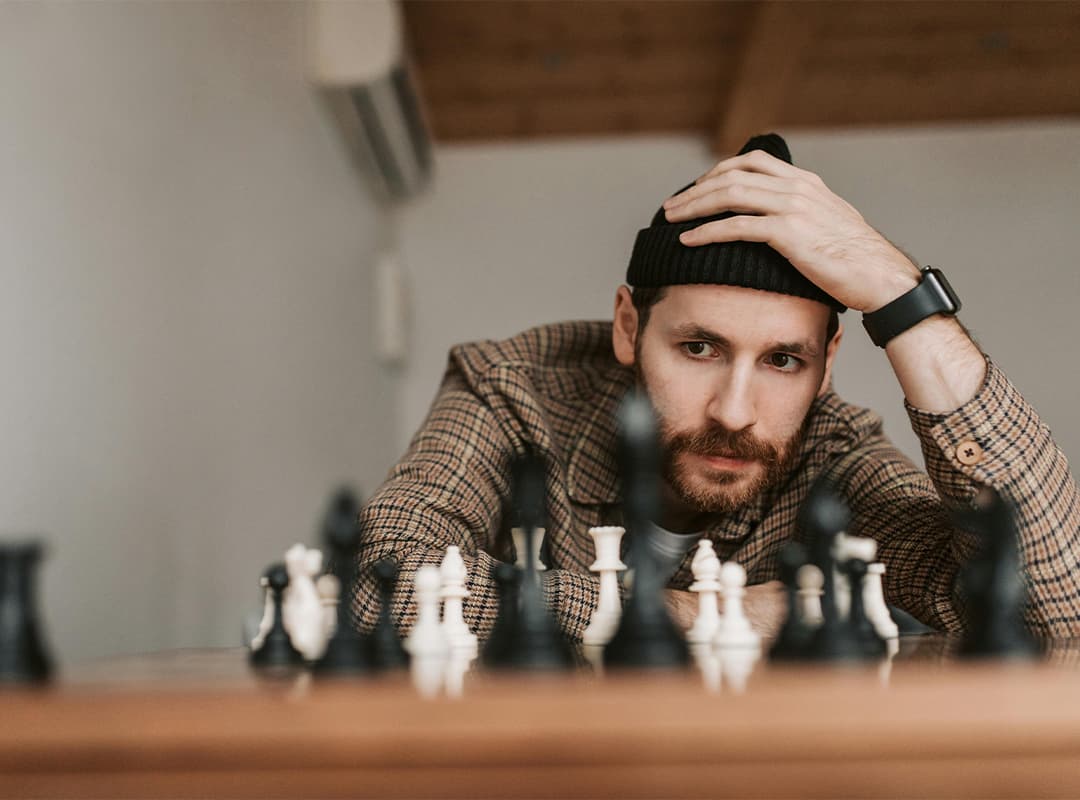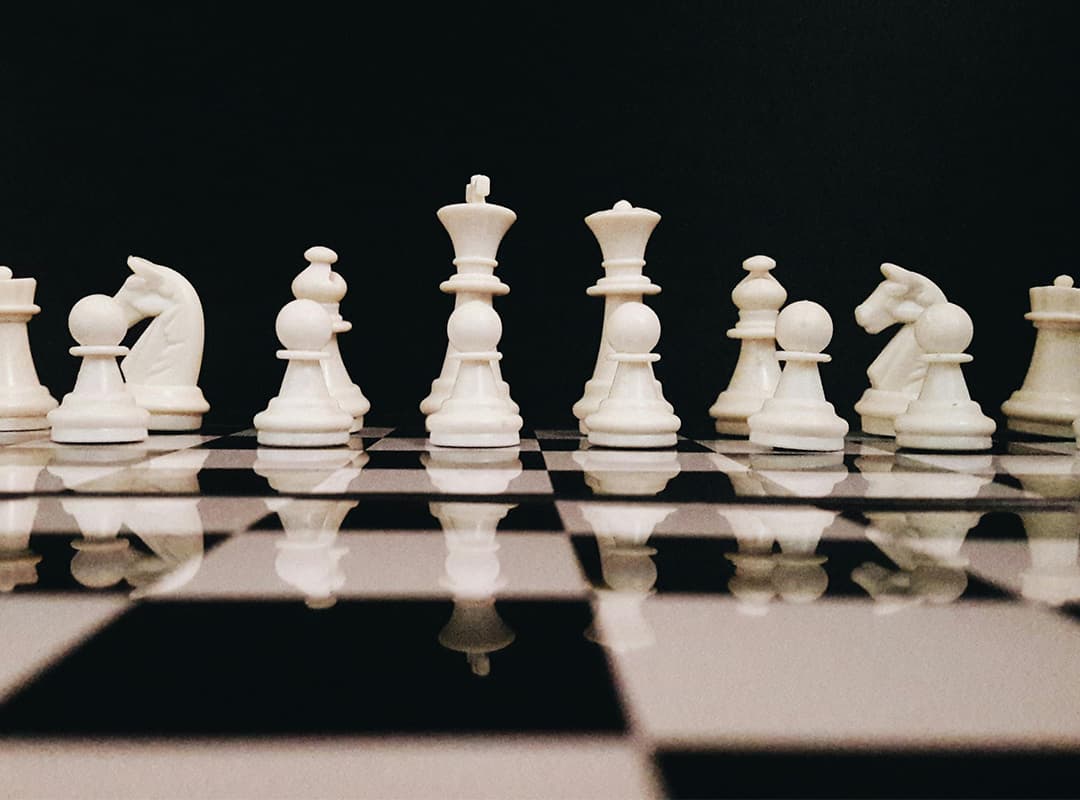Chess is more than just a game of moves; it’s a mental battle that requires strong strategic thinking. As you progress in chess, learning how to plan several moves ahead, anticipate your opponent’s strategy, and create a balanced game plan becomes essential. Here’s a guide on how to develop strategic thinking skills that can help you improve your game, whether you’re playing a live opponent or testing your skills in chess against computer.
1. Understand the Value of Each Piece
A fundamental part of strategic thinking in chess is knowing the value of each piece and how to maximize its potential. Here’s a basic breakdown:
- Pawns (1 point): Often called the “soul of chess,” pawns are essential for structure and can become powerful when advanced.
- Knights (3 points) and Bishops (3 points): Knights are ideal for close combat and “forks,” while bishops excel on open, diagonal lines.
- Rooks (5 points): Rooks are powerful on open files and should ideally be placed in the center or active lines.
- Queens (9 points): The most versatile piece, the queen combines the movement of a rook and bishop, making it crucial in offense and defense.
- King: While technically priceless, the king’s strategic placement is essential for endgames and survival.
Learning the value of each piece helps you see the board from a wider perspective, making it easier to decide which pieces to trade and how to use each one effectively.
2. Prioritize Control of the Center
Controlling the center of the board (squares d4, d5, e4, and e5) is a critical strategy in chess. The center allows your pieces more mobility and influence over the board, giving you more strategic options.
How to Practice Center Control: Focus on moving central pawns (e.g., e4, d4) and develop your knights and bishops to target central squares. When practicing chess against computer, aim to control the center early on and observe how the computer responds to your central dominance. You’ll see that a strong central position allows your pieces to support each other more effectively and opens up multiple tactical possibilities.
3. Think Several Moves Ahead
Strategic thinking in chess requires planning beyond your current move. Rather than focusing on immediate gains, think about the sequence of moves that could give you an advantage.
How to Think Ahead: Start by analyzing your options for the next two to three moves. For example, ask yourself, “If I make this move, what will my opponent do? How will I respond?” Playing chess against computer is an excellent way to develop this skill since computers often react consistently to specific moves, allowing you to anticipate and adapt your responses.
4. Learn Key Chess Strategies
A solid understanding of chess strategy is essential for effective long-term planning. Here are a few fundamental strategies:
- King Safety: Always prioritize castling early to protect your king and connect your rooks.
- Piece Activity: Keep your pieces active and well-positioned to control the board. Avoid “locking” your pieces behind pawns or in inactive positions.
- Pawn Structure: Good pawn structure creates a strong foundation. Avoid unnecessary pawn moves and focus on maintaining a cohesive structure.
These strategies serve as guidelines to keep you organized and help you make decisions that strengthen your position rather than simply reacting to your opponent.
5. Recognize Patterns and Common Positions
Chess has many common patterns and positions, such as “pins,” “forks,” and “skewers.” Recognizing these patterns on the board can help you spot tactical opportunities and avoid threats.
How to Recognize Patterns: To get better at this, study classic games and focus on identifying patterns rather than memorizing moves. You can practice spotting these patterns by playing chess against computer, as many online platforms allow you to review your games with a move-by-move analysis, pointing out when these patterns appear.
6. Learn Opening Principles Rather Than Memorizing Moves
Many beginners make the mistake of trying to memorize specific opening sequences. Instead, focus on the principles of a strong opening: control the center, develop your pieces, and ensure king safety.
How to Develop an Opening Strategy: Practice a few basic openings that align with these principles, such as the Italian Game or Queen’s Gambit. In chess against computer matches, experiment with different openings and observe how the computer responds. This approach will help you understand the flow of the game and make strategic adjustments as needed.
7. Improve Positional Play
Positional play is about finding the best positions for each of your pieces. Rather than aiming for immediate threats, positional play focuses on gradually improving your overall position on the board.
How to Develop Positional Play: Begin by identifying the weakest and strongest squares for each piece. For example, if you have a knight on the edge of the board, consider moving it toward the center where it has more mobility. Playing chess against computer is a useful way to work on positional play because you can test out different moves and assess their impact on your board control and overall structure.
8. Practice Patience and Long-Term Planning
Strategic thinking in chess requires patience. Avoid rushing to capture material or initiate attacks without a clear purpose, as this often leads to oversights and blunders. Instead, focus on creating a solid foundation and planning for the long game.
How to Build Patience: Practice slowing down your decision-making process and consider your opponent’s intentions. Ask yourself questions like, “What is my opponent trying to achieve with their last move?” and “How will this move affect my position in the long run?” Over time, this habit will help you make each decision with greater clarity and foresight.
Developing strategic thinking in chess takes practice, focus, and patience. By learning the value of each piece, controlling the center, recognizing patterns, and prioritizing your king’s safety, you’ll start to see the board in a more holistic way. Playing chess against computer is an excellent way to hone these skills, as it allows you to test strategies, review your moves, and improve with each game. With consistent practice, you’ll find yourself playing with greater depth, enjoying the game’s nuances, and steadily becoming a more formidable chess player.


